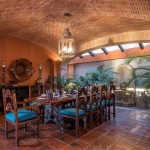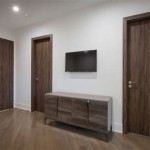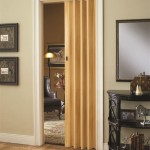The Psychology of Interior Design: Enhancing The Human Experience Through Space
Interior design is not merely about aesthetics; it encompasses a profound understanding of human behavior and psychology. By thoughtfully designing spaces, we can create environments that positively impact our well-being, productivity, and overall experience.
1. Color and Mood
Colors have a significant psychological effect, influencing our moods and emotions. Warm colors like red, orange, and yellow evoke feelings of warmth, coziness, and energy, while cool colors like blue, green, and purple promote tranquility, relaxation, and concentration. By carefully selecting colors, designers can create spaces that evoke specific desired emotions.
2. Lighting and Atmosphere
Lighting plays a crucial role in shaping the ambiance of a space. Natural light promotes alertness and well-being, while artificial light can create specific moods depending on its intensity and color temperature. Soft, warm lighting fosters intimacy and relaxation, while brighter, cooler lighting enhances concentration and productivity.
3. Spatial Arrangement
The way furniture and objects are arranged in a space can significantly impact our perception and interaction with it. Open and spacious layouts promote a sense of freedom and collaboration, while smaller, enclosed spaces can create a sense of privacy and coziness. Designers carefully consider the flow of traffic, accessibility, and visual impact when arranging elements in a space.
4. Textures and Materials
Textures and materials evoke different sensory experiences, influencing our perception of a space. Smooth, polished surfaces offer a sleek and modern aesthetic, while rough, textured surfaces can add depth and warmth. Natural materials like wood and stone create a connection with nature, while synthetic materials offer practical and durable solutions.
5. Patterns and Symmetry
Patterns and symmetry can create visual interest and order in a space. Symmetrical arrangements convey a sense of balance and harmony, while asymmetrical designs can stimulate creativity and evoke a dynamic atmosphere. Designers use patterns and symmetry to guide the eye, create focal points, and establish visual connections throughout a space.
In conclusion, the psychology of interior design is a multifaceted field that explores the profound impact of our surroundings on our mental and emotional well-being. By understanding the principles outlined above, designers can create spaces that not only meet functional needs but also enhance the human experience.

Psychology Of Interior Design How Furniture Affects Your Mood Italica

Psychology Of Color In Interior Design

When Interior Design Meets Psychology Essence Of Home

Color Psychology In Interior Décor Design Ideas For The Built World

How To Use Color Psychology In Interior Design Nativa Interiors

Color Psychology An Interior Design Tool Didt Campus

Basic Psychology Of Interior Designing You Must Follow

The Psychology Of Restaurant Interior Design Part 1 Color

Psychology Of Color Interior Design

How To Use Color Psychology In Interior Design Nativa Interiors








